By January 2027, the UK’s analogue landline network (PSTN) will be switched off, pushing every organisation onto all-IP voice. Around 13 million lines and channels still need migrating as part of this change, an enormous shift with real risk if voice goes down.
The question isn’t whether to move, but how to choose the right partner, quickly and safely. This guide compares the leading UK SIP trunk providers using data that matters: uptime guarantees, network design, pricing transparency, security posture, number porting speed, and UK coverage. It also clarifies context: Openreach’s national stop-sell on legacy WLR products began in September 2023, and fibre availability for SMEs keeps rising (79% now have access to gigabit-capable networks), which changes your connectivity options and vendor shortlists.
What you’ll find here:
- A decision framework that ties provider claims to measurable ROI and resilience.
- A ranked, verifiable snapshot of top SIP trunking options in the UK.
- A practical rollout path, assessment, configuration, porting, and testing, built for busy teams.
If you’re searching for the Best SIP Trunk Provider In The UK, use this as a fact-checked shortcut rather than another sales pitch.
Why SIP Trunking Is Reshaping UK Business Communications
SIP trunking replaces the fixed copper lines of ISDN with virtual voice channels delivered over the internet. Instead of routing calls through legacy exchanges, it connects existing PBX systems directly to IP networks, acting as the bridge between traditional telephony and cloud communication. That shift has become critical as the UK approaches a major infrastructure change.
ISDN Switch-Off and the Push Toward VoIP in the UK
BT Openreach began its ISDN phase-out in 2020, with a complete national switch-off scheduled for January 2027, originally targeted for 2025 but extended to allow additional migration time. Once the PSTN is shut down, every voice connection must run over IP.
For businesses still relying on ISDN, the countdown means decisions can’t wait. Procurement teams are now prioritising SIP trunking as the most direct, reliable migration path. It allows reuse of current PBX hardware while preparing for full VoIP or Unified Communications (UC) adoption later. This hybrid flexibility makes SIP trunks a low-risk, future-proof option during the transition years.
Business Impact: From Cost to Continuity
The financial case is clear. According to Ofcom and Frost & Sullivan analyses, organisations switching from ISDN to SIP save between 30% and 40% on monthly call and line rental costs due to per-second billing and channel consolidation.
Savings aside, SIP trunking also delivers resilience and scalability impossible with legacy circuits. Businesses can add or remove channels instantly, vital for handling seasonal demand or supporting hybrid teams. Built-in rerouting and geographic failover protect continuity if a primary site goes offline, ensuring uptime levels near 99.999% when paired with a Tier-1 provider.
For UK enterprises balancing cost pressure, remote work, and voice reliability, SIP trunking isn’t just a technology upgrade, it’s an operational necessity.
What to Look for in a SIP Trunk Provider (Decision Framework)
Selecting a SIP trunk provider isn’t about comparing marketing checklists, it’s about assessing measurable performance and real cost outcomes. The best providers prove their reliability through transparent SLAs, network redundancy, and responsive support. Below is a framework to evaluate UK SIP vendors based on the factors that directly affect uptime, call quality, and ROI.
Reliability & Redundancy Standards
A strong provider should guarantee 99.999% uptime, which translates to less than five minutes of downtime per year. That’s achieved through geo-redundant data centres across multiple UK and EU regions. If one route fails, calls are automatically rerouted to another active node, known as geo-failover.
Many UK enterprises treat SIP reliability as a continuity safeguard. For instance, a 2024 case study by Gamma Telecom reported zero dropped calls during a regional outage thanks to multi-site redundancy and automatic rerouting. Such resilience is what separates Tier-1 carriers from resellers that depend on a single upstream connection.
Call Quality & Network Architecture
Voice quality is determined by more than bandwidth. Top-tier providers prioritise low-latency routing (under 150 ms round-trip) and use Quality of Service (QoS) rules to protect real-time voice packets from congestion.
Providers that operate direct peering with major UK ISPs or hold Tier-1 interconnects deliver cleaner routes and lower jitter. Codec options such as G.711 for uncompressed audio or G.729 for bandwidth optimisation give customers control over the trade-off between quality and data usage. Always ask where your calls are handed off, and whether your provider manages its own backbone or leases it.
Pricing Transparency & Billing Models
SIP pricing in the UK typically follows three models: per-channel, per-minute, or bundled.
- Per-channel works like ISDN, pay for a set number of concurrent calls.
- Per-minute suits variable usage or seasonal demand.
- Bundled plans combine fixed channels with inclusive minutes.
Most reputable UK providers charge £5–£15 per SIP channel per month, depending on included features and routing quality. Avoid contracts that hide activation fees, setup costs, or minimum call spend, as these can inflate total ownership cost by up to 20%. Transparent billing, often with live dashboards, is a strong indicator of trustworthiness.
Security & Compliance
Voice over IP exposes networks to toll fraud and interception if left unsecured. Look for providers that enforce TLS encryption for signalling and SRTP for media streams, ensuring that voice data stays private end to end.
Fraud prevention systems should flag irregular call patterns and block unauthorised destinations in real time. In the UK context, ensure full GDPR compliance and support for 999/112 emergency routing, mandatory for any enterprise-grade SIP trunk. Providers like DIDlogic and BT Wholesale now integrate fraud monitoring directly into their dashboards, allowing users to see blocked attempts in real time.
Customer Support & Technical Responsiveness
The quality of post-sale support often determines the long-term success of a SIP deployment. 24/7 UK-based technical support, not offshore ticket queues, is crucial for resolving outages within SLA limits.
Check Trustpilot ratings, Gartner Peer Insights, or verified business reviews for patterns in response times and escalation procedures. A good benchmark: live chat replies within 5 minutes and critical incidents addressed within one hour.
Providers that offer named account engineers or dedicated onboarding teams typically maintain higher customer retention, as support continuity mirrors the reliability of their infrastructure.
The Top SIP Trunk Providers in the UK (Ranked and Compared)
The UK SIP trunking market has matured fast, driven by the national ISDN shutdown and the widespread adoption of hybrid voice systems. Each provider below represents a different strength: from enterprise-grade resilience to flexible APIs and transparent pricing. The following table gives a quick snapshot before diving into detailed overviews.
| Provider | Key Strength | Best For | UK Presence | Starting Price | Trustpilot Rating |
| DIDlogic | Global routing, transparent pricing, instant provisioning | SMEs → enterprises | London | From £5/channel | ★ 4.9 |
| BT Wholesale | Legacy integration, nationwide coverage | Large enterprises | Nationwide | On request | ★ 4.2 |
| Gamma Telecom | UCaaS integration, proven reliability | Mid-sized firms | UK-only | From £8/channel | ★ 4.3 |
| Twilio | Developer flexibility, programmable APIs | SaaS platforms, developers | Global | Usage-based | ★ 4.4 |
| RingCentral | Unified comms and collaboration platform | Hybrid and remote teams | UK + EU | From £10/user | ★ 4.1 |
#1 Recommended Provider: DIDlogic
DIDlogic stands out as the most balanced choice for UK businesses seeking enterprise-grade routing at SME-accessible pricing. It operates its own Tier-1 interconnections with direct peering in London, Frankfurt, and Amsterdam, reducing latency and eliminating middlemen common with resellers.
Key advantages:
- Transparent, usage-based pricing starting at £5 per SIP channel, published publicly without activation fees.
- Full support for both on-prem PBX systems (Cisco, Asterisk, FreePBX, 3CX) and cloud environments such as Microsoft Teams or Zoom Phone.
- Wide coverage including local, mobile, and toll-free UK numbers, plus 150+ international destinations.
- Independently verified 99.999% uptime SLA, backed by dual-redundant PoPs and real-time monitoring dashboards.
- 24/7 multilingual support through live chat and instant ticket escalation.
A 2024 review by ITPro Today noted that DIDlogic’s provisioning time, under 5 minutes for new trunks, was the fastest among global carriers tested. SMEs migrating from ISDN often cite its intuitive portal and billing transparency as decisive factors.
Other Strong Contenders
Gamma Telecom
A domestic powerhouse trusted by thousands of UK businesses. Its core network spans 10+ carrier-grade sites with resilient routing and easy ISDN migration paths. Gamma’s SIP service integrates seamlessly with Microsoft Teams and Horizon Cloud PBX. Average pricing begins around £8 per channel, with bundled minute packages for predictable costs.
BT Wholesale
The backbone provider for many UK telcos, BT Wholesale is ideal for large enterprises or public-sector organisations with complex legacy systems. It offers direct PSTN migration programs and nationwide number portability, but pricing is available only upon request. Its main strength lies in integration with existing MPLS and private WAN infrastructures, perfect for corporates prioritising network control.
Twilio
Globally recognised for its developer ecosystem, Twilio’s SIP trunking shines in programmability rather than managed service. Its API-first design suits SaaS platforms and contact-centre solutions that need custom call routing or analytics. Pricing is usage-based, and though support is less direct than domestic providers, its scalability and international reach are unmatched.
RingCentral
A strong choice for distributed teams, RingCentral merges SIP trunking with a full Unified Communications as a Service (UCaaS) suite. It includes voice, video, and messaging under one license, ideal for hybrid workplaces. Pricing starts at £10 per user, slightly higher than standalone SIP trunks, but the all-in-one approach simplifies management for businesses prioritising convenience over custom routing.
Implementation: How to Deploy SIP Trunking for Your UK Business
Migrating to SIP trunking requires a structured rollout, not a plug-and-play setup. The process below outlines a technical workflow that UK businesses can follow to ensure a smooth transition, minimising downtime, preserving call quality, and validating system compatibility before go-live.
Pre-Deployment Assessment
Start with a network readiness audit. Voice traffic demands a stable and prioritised internet connection, not just raw speed. For reference:
- Allocate 100 kbps per concurrent G.711 call or 30 kbps with G.729 compression.
- Maintain latency below 150 ms round trip, jitter under 30 ms, and packet loss below 1%.
Run QoS (Quality of Service) tests using tools such as VoIPmonitor, PingPlotter, or DIDlogic’s in-portal diagnostics to confirm real-world performance. If you’re using SD-WAN or dual ISPs, ensure dynamic failover routing is enabled so calls reroute automatically during link degradation.
Next, verify PBX compatibility. Most UK deployments connect SIP trunks to one of four systems, Cisco Unified Communications Manager, Asterisk, FreePBX, or 3CX. Confirm the PBX firmware supports SIP over TLS and SRTP for encrypted media. If not, a Session Border Controller (SBC) can bridge encryption gaps while adding firewall and NAT traversal.
Configuration and Number Porting
Once network readiness is confirmed, register the SIP trunk within your PBX or SBC. Providers like DIDlogic issue SIP credentials (username, password, and server domain) instantly via a customer portal. Configure:
- Outbound routes to prioritise emergency and international traffic correctly.
- Inbound DID mapping so local and toll-free numbers ring the correct extensions or hunt groups.
For businesses moving existing numbers, UK number porting averages 7–10 business days, depending on the losing carrier’s response. Submit your porting request early, as incomplete address or account details are the most common cause of delay. During the cutover window, calls may briefly reroute to a temporary DID, plan this to avoid downtime during business hours.
Testing and Optimization
Before going live, simulate call loads and verify audio quality under stress. Use Wireshark or sngrep to inspect SIP signalling for 200 OK responses, authentication, and route confirmation.
Key metrics to test and document:
- Latency: ≤150 ms
- Jitter: ≤30 ms
- Packet loss: ≤1%
- MOS (Mean Opinion Score): ≥4.0 for acceptable voice clarity
Monitoring tools like PRTG, VoIP Spear, or DIDlogic’s built-in call quality analytics help track performance continuously after deployment.
For ongoing management, establish a support escalation workflow: Tier 1 for PBX or internal network issues, Tier 2 for provider diagnostics, and Tier 3 for routing or carrier interconnect faults. Logging test data from the initial rollout helps providers pinpoint anomalies faster if call quality drops later.
Cost and ROI: What UK Businesses Actually Save
The financial benefit of SIP trunking is one of its strongest selling points, not just in monthly bills, but in the long-term scalability that eliminates fixed-line limitations. Independent studies from Ofcom and Frost & Sullivan estimate that UK companies moving from ISDN to SIP can save 30%–40% on recurring voice costs while gaining more flexible capacity management.
Real-World Cost Example
Consider a medium-sized firm operating 20 SIP channels, handling about 10,000 minutes per month (typical for a 50–70 employee organisation).
| Scenario | Monthly Line Rental | Call Charges (10,000 min) | Total Monthly Cost |
| ISDN (Legacy) | £600–£700 | £350–£400 | £950–£1,100 |
| SIP Trunking | £100 (20 × £5/channel) | £250–£300 | £350–£400 |
That same company saves roughly £400–£600 each month, or more than £5,000 annually, by eliminating ISDN line rental and leveraging SIP’s per-second billing model.
Savings increase further when call volumes spike, since SIP trunks allow dynamic channel scaling, you can add or remove capacity instantly without ordering new lines or hardware. In contrast, ISDN required manual provisioning and physical installation, leading to overcapacity costs during slower months.
Long-Term ROI Factors
- Scalability on Demand: SIP channels can be added in real time to accommodate campaign spikes or seasonal traffic, avoiding the “always-on” cost model of ISDN.
- Unified Connectivity: One IP network can handle both voice and data, reducing infrastructure duplication.
- Reduced Maintenance: No more PBX line cards or on-site visits for upgrades, most management occurs via web dashboards.
- Global Routing Efficiency: Providers like DIDlogic optimize least-cost routing across Tier-1 networks, further lowering per-minute rates for international calls.
- Operational Continuity: Geo-redundant SIP routes mean less downtime, which directly translates to revenue retention.
For most UK businesses, the initial setup cost (if any) pays back within one to two months, making SIP trunking one of the fastest ROI-positive telecom upgrades currently available.
The Future of SIP Trunking in the UK
As the UK edges toward full IP adoption, SIP trunking is evolving from a transitional technology into the core of enterprise communication infrastructure. With the ISDN shutdown imminent and national fibre coverage expanding, the next decade will see SIP trunking blend seamlessly with Unified Communications (UC) and AI-powered analytics, transforming how businesses manage voice traffic, continuity, and customer experience.
ISDN Sunset and Fibre Rollout Impact
The final PSTN/ISDN switch-off in 2027 marks a turning point in the UK’s telecom landscape. As Openreach retires copper-based services, the migration to fibre networks, now covering over 80% of UK premises according to Ofcom, gives SIP trunking a more stable and resilient foundation.
Full Fibre (FTTP) and gigabit connectivity dramatically lower latency and jitter, allowing voice packets to travel on dedicated low-loss routes. For enterprises, this means higher MOS (Mean Opinion Scores), fewer dropped calls, and faster call setup times. Providers like DIDlogic already leverage this infrastructure through local peering in London and Amsterdam, ensuring real-time voice traffic stays within UK and EU data zones for compliance and performance.
Fibre rollout also unlocks multi-path redundancy, businesses can maintain two ISPs on separate fibre lines, letting SIP calls automatically fail over between networks without interruption. This capability effectively ends the single-point-of-failure problem that plagued legacy circuits.
Evolution Toward Unified Communications & Cloud PBX
SIP trunking is no longer just a connectivity layer; it’s becoming the engine behind UCaaS (Unified Communications as a Service) and Cloud PBX ecosystems. Enterprises increasingly consolidate calling, messaging, and video into a single IP framework, and SIP is the protocol that binds them all.
Modern PBX platforms such as 3CX, Microsoft Teams, and Zoom Phone now integrate SIP trunks natively, allowing companies to manage both internal and external communications through one dashboard. The result: simplified provisioning, unified billing, and end-to-end visibility across global teams.
This convergence will deepen as providers embed SIP routing directly into UC and CCaaS (Contact Centre as a Service) layers, enabling smarter routing logic that factors in agent availability, CRM data, and call history, all while maintaining carrier-grade uptime.
AI-Driven Call Routing & Analytics
The next phase of SIP innovation is AI-driven optimisation. Carriers are beginning to deploy adaptive routing models that analyse latency, jitter, and cost data in real time to choose the best route for every outbound call.
Platforms such as DIDlogic’s Adaptive Routing Engine already apply this intelligence at scale, detecting congestion across networks and automatically switching to alternative Tier-1 routes before the user notices a drop in quality.
Beyond routing, AI is transforming voice analytics and fraud detection. Machine learning models can identify anomalies in call duration, frequency, and geography to block fraudulent activity before billing occurs. In parallel, AI-powered dashboards provide granular insights into call quality metrics per region, codec, and ISP, turning what used to be reactive troubleshooting into proactive network optimization.
As fibre, UCaaS, and AI converge, SIP trunking will shift from being an enabler to becoming the intelligent core of enterprise voice systems, a foundation that scales, self-optimises, and adapts to every business need.
FAQs
What’s the average SIP trunk cost per channel in the UK?
Most UK providers charge between £5 and £15 per SIP channel per month, depending on the routing quality, SLA guarantees, and included call bundles. Entry-level pricing typically suits small businesses, while enterprise-grade trunks with geo-redundancy and 24/7 monitoring sit at the higher end.
Are UK emergency calls supported through SIP trunks?
Yes. Reputable SIP providers fully support 999 and 112 emergency routing as required by Ofcom regulations. Each SIP account must register a valid UK address to ensure accurate location identification for emergency responders.
How fast can number porting be done?
UK number porting usually takes 7–10 business days for standard DIDs. Larger batches or complex carrier transfers can take longer if documentation isn’t aligned. During the switch, most providers route calls to a temporary DID to prevent downtime.
Is SIP trunking secure and GDPR-compliant?
Modern SIP trunks use TLS encryption for call signalling and SRTP for voice streams, keeping all audio and metadata secure. Providers operating within the UK and EU must also comply with GDPR, ensuring personal data, including call logs and recordings, remains protected and processed within approved regions.
What’s the best SIP trunking solution for hybrid or remote teams?
Solutions offering cloud PBX integration and global DID coverage work best for hybrid teams. DIDlogic, for example, supports direct interconnections with Microsoft Teams, Zoom Phone, and 3CX, enabling employees to use the same business numbers from any device or location without VPNs or separate softphones.
How do SIP trunks handle call overflow and redundancy?
Advanced providers use geo-redundant routing and automatic failover to reroute calls during congestion or outages. When primary routes hit capacity, calls overflow seamlessly to alternate servers, preserving uptime close to 99.999%. This built-in redundancy keeps businesses reachable under virtually any network condition.
Further Reading










